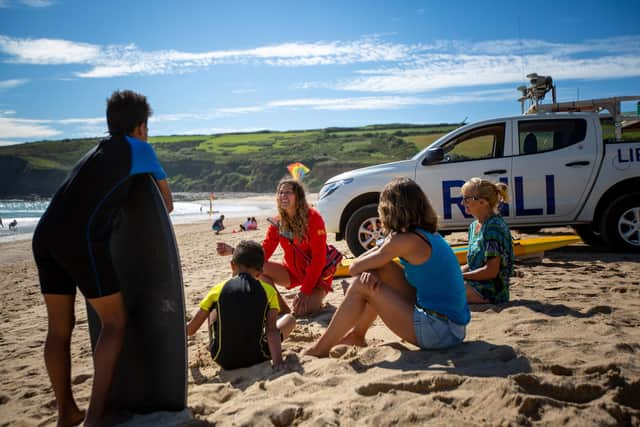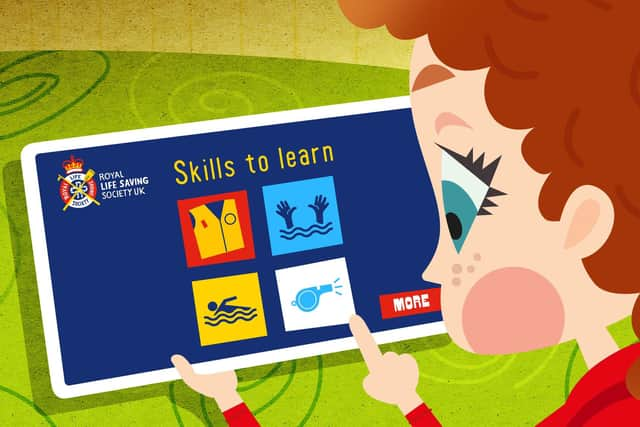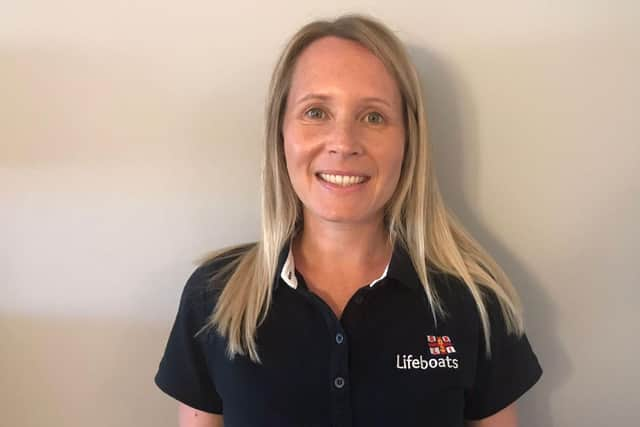How to keep safe on the beach this summer
and live on Freeview channel 276
But it is important to be aware of how to be safe especially when you go into the water.
More than 400 people die each year in the UK and Ireland from accidental drowning.
Advertisement
Hide AdAdvertisement
Hide AdLee Heard, charity director at Royal Life Saving Society UK (RLSS UK) said: “With June, July, and August proving to be the months with the most fatalities, it is vitally important that everyone has an understanding of water safety, especially during the summer months.
“We have seen a rise in the number of drownings over the last few years, with peaks during the summer. In July 2021, there were 49 accidental drowning fatalities in the space of just two weeks in the UK, and we know that with the right water safety knowledge, accidental drownings are avoidable.
“We want to ensure that everyone can enjoy their summer break and enjoy being in or around water but be safe in the knowledge that they, and their children, have the skills and understanding about water safety, which could potentially save a life. Every life is worth saving.”
With many families opting for staycations and heading to the coastlines and waterways for holidays in recent times, having an understanding of what to do if you find yourself or someone else in trouble in the water is more important than ever.
Advertisement
Hide AdAdvertisement
Hide AdGabbi Batchelor is RNLI South East water safety education manager based in Brigthon.


She explains how people tend to underestimate how powerful the sea can be and that it can be easy to get caught in strong currents even close to the shore.
Her top three tips are:
If you get into trouble in the water, Float to Live: lean back, using your arms and legs to stay afloat. Control your breathing, then call for help or swim to safety. This technique has saved many peoples lives.
In a coastal emergency, call 999 or 112 for the coastguard.


Swim at a lifeguarded beach in between the red and yellow flags.
Advertisement
Hide AdAdvertisement
Hide AdShe said: “We want everyone to enjoy the coast this summer and their time in the water. It is however important that anyone visiting the coast understands the risks of the environment. The sea can be very unpredictable, particularly during early summer when the risk of cold water shock significantly increases, as air temperatures warm but water temperatures remain dangerously cold.
“There are a number of steep shelving beaches along the Sussex coast and it is important to understand that the groynes can be hidden during high tide and very painful if you swim into them.”
It is important when at the beach to keep an eye on tide times so you don’t get caught by a rising tide and always check the weather and wind direction especially if going out on a paddleboard or kayak.


Gabbi said: “It is not advisable to use an inflatable toy on open water especially when there are offshore winds, these should be kept for the use in swimming pools only due to their design and weight, it is very easy to drift out to sea and end up a few miles of shore.
Advertisement
Hide AdAdvertisement
Hide Ad"Take a waterproof phone pouch with you when paddleboarding or kayaking so you can call for help in an emergency. Also wear a buoyancy aid/lifejacket to protect you should you end up in the water and lose your craft.
“If you are going to be open water swimming, take a buddy or have a spotter on the beach, swim with a bright coloured tow float and swim hat, consider a wetsuit for warmth and buoyancy, keep an eye on the currents and your entry/exit points.”
When swimming on the beach try and visit a lifeguarded beach and swim between the red and yellow flags. This is the safest place to swim and lifeguards will patrol this area. The red and yellow flags also apply if you are on a body board, whereas surfboards, stand-up paddleboards or other non-powered craft, go between the black and white chequered flag. You should not swim there. If a red flag is flying, the water is dangerous. Do not enter the water under any circumstances.
Gabby added: “We tend to find people who have not taken the right equipment with them.
Advertisement
Hide AdAdvertisement
Hide Ad"Heading out on a paddleboard is great fun, but without a buoyancy aid and appropriate means of calling for help, if you end up in trouble it will be really difficult to remain safe and for the rescue services to find you.
“Another mistake is the lack of supervision from parents, it is really important families stay together and keep an eye on their children so that everyone enjoys their time at the coast and comes home safely. It is very easy to get distracted by other events going on at the beach.
“Our key safety messages which we teach to young people are to Stop & Think, Stay Together, FLOAT, Call 999 or 112 and ask for the coastguard.”
In 2021 evidence from the National Water Safety Forum found 40 per cent of people who died had no intention of entering the water, such as those walking, with causes including slips, trips and falls, being cut off by the tide, or swept in by waves.
Advertisement
Hide AdAdvertisement
Hide AdLee said: “In a recent survey, more than 55 per cent of parents said they would not be confident their child would know what to do if they fell into open water; this is something we want to change.”
The RLSS UK has a range of free educational resources available on its website for children, young people and parents.